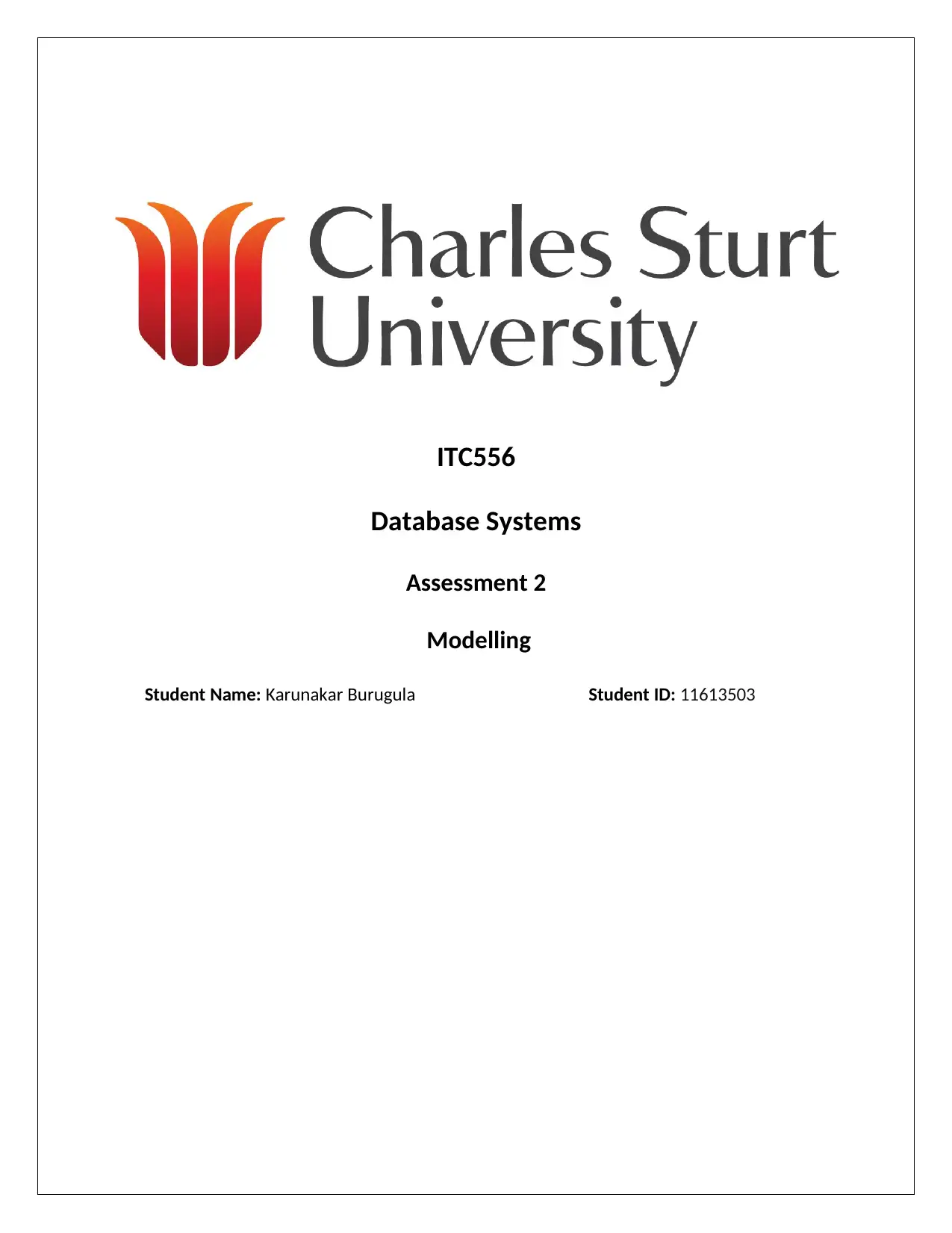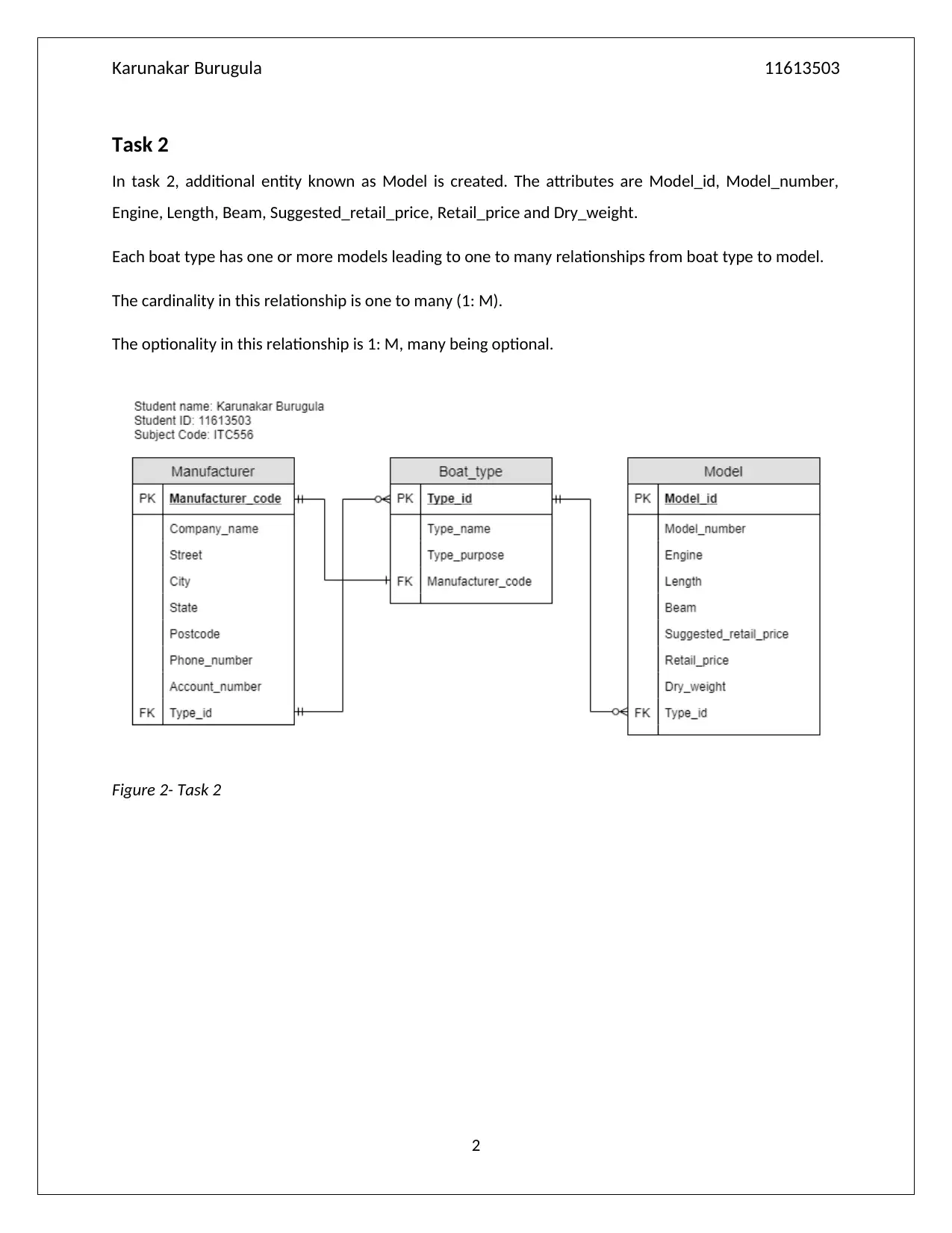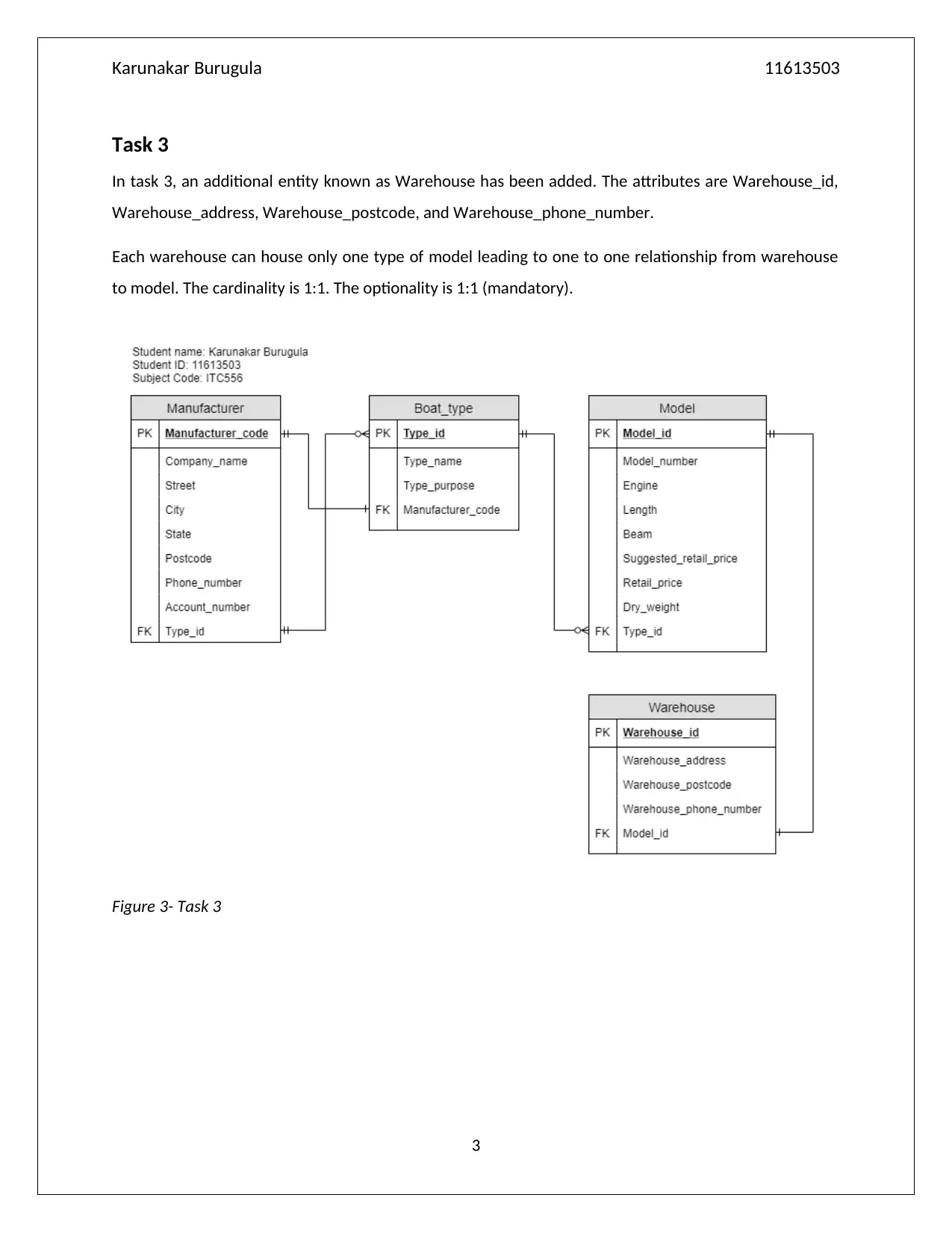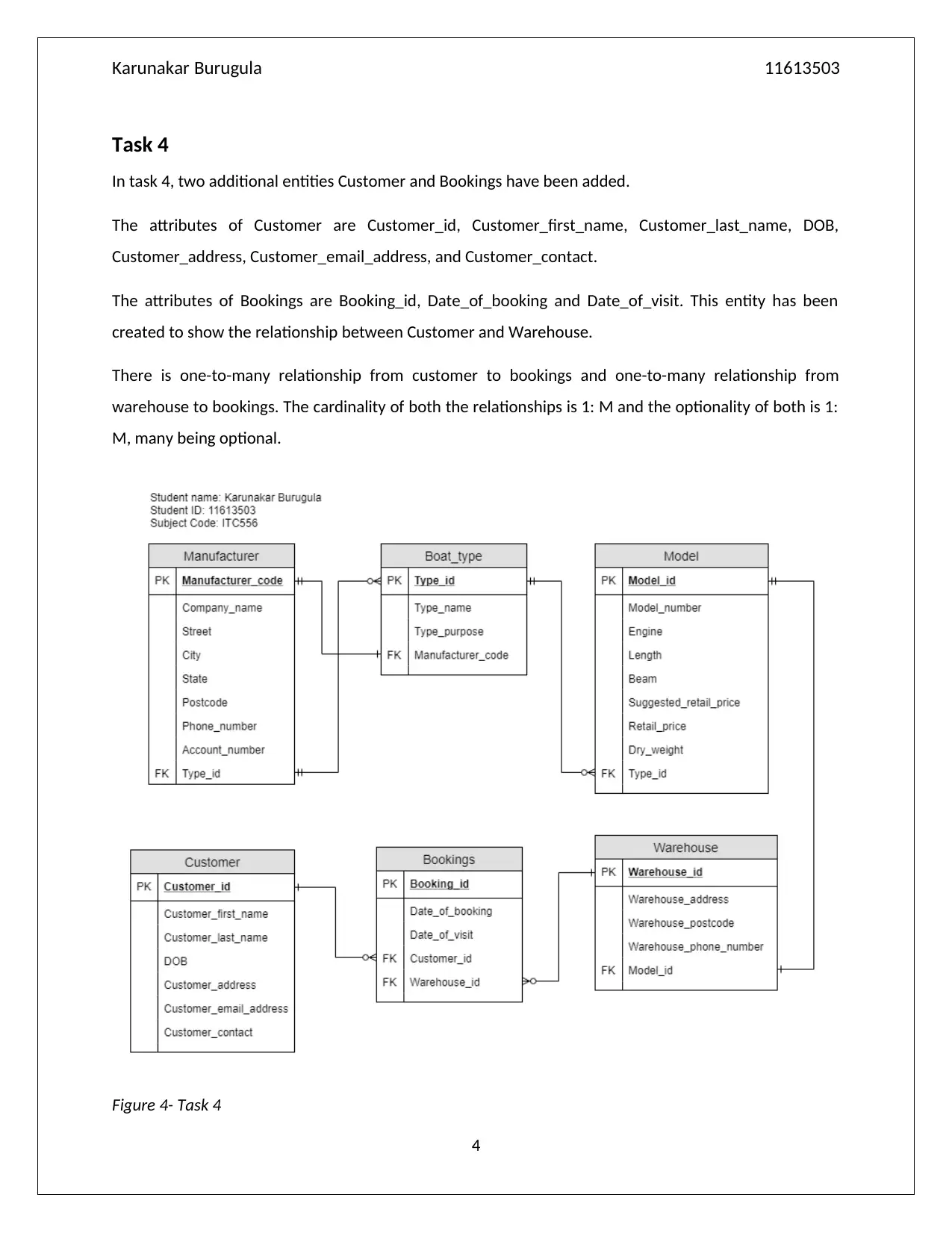ITC556 Database Systems: ER Diagram Modelling Assignment Solution
VerifiedAdded on 2024/05/17
|6
|485
|426
Practical Assignment
AI Summary
This document presents a solution to a database systems modelling assignment. The solution involves creating entity-relationship (ER) diagrams for a boat manufacturing scenario. It starts with two entities, Manufacturer and Boat Type, and progressively adds more entities such as Model, Warehouse, Customer, and Bookings, illustrating the relationships between them. The ER diagrams depict the cardinality and optionality of these relationships, providing a clear representation of the database structure. The assignment covers tasks involving one-to-many and one-to-one relationships, showcasing how different entities interact within the database. Desklib offers a platform for students to access this and other solved assignments.
1 out of 6













![[object Object]](/_next/static/media/star-bottom.7253800d.svg)